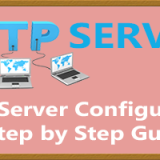Troubleshooting Networking devices and testing using tools
Troubleshooting Networking Data transmitted within a network travels through various physical devices and finally reaches the intended destination. If any device in the transmission path is not working, the data will not be transmitted. Various testing and troubleshooting tools are available to keep the network functioning.
Troubleshooting Networking devices and testing using tools
In this troubleshooting Networking devices lesson you learn
- Identify the tools used for troubleshooting physical networks
- Perform loop back test
- Explain the various diagnostic utilities
- Troubleshooting TCP/IP connections
Network Monitor
- Tool used to view and detect problems on local area and networks
- Gives information related to traffic that is flowing back and forth from the network adapter
- Allows gathering of relevant data by setting filters to capture only specific type of information
- Allows modifying the way the information is displayed on the screen for simplifying analysis of the information
LAN Testers
LAN testers are used to verify 10, 100 and 1000 Base-T network. They also allow you to test and replar the network. A LAN tester consists of two units, the main unit and the Remote probe. The main unit performs the task of identifying the LAN device type i.e. whether it is a hub, switch or a PC. It also determines the speed of the LAN and the type of transmission mode. The remote probe helps in locating cable locations where a fault is present.
Cable Testers
Cable Testers are used to verify the electrical connections. They consist of a source of electrical current, a voltmeter, a switching matrix that connects the current source and the voltmeter to all of the contact points in a cable. In addition, it may also consist of a micro-controller, which automates the testing process and displays the result.
In this Troubleshooting Networking lesson you learn that
- Loopback test is used to test if the ports are functioning properly
- Faults in cables can be located using time-domain reflectometer
- Network monitor provides information related to network traffic
- Protocol analyzers interpret the contents of the intercepted packets
- Netstat is used to check the ports that are active on your system
- ipconfig provides information related to TCP/IP connection
- Ipconfig is used for Windows 2000 or later versions
- Winipcfg is used for Windows 98 or other Win9x versions
Related Articles
Introduction on Computer Networking
Thanks for your wonderful Support and Encouragement
- Get Email | Download E-Books
- Facebook Page
- Youtube Channel
- Exclusive Telegram Group
- Discuss On WhatsApp Group







Hi, Provided information very useful and provided youtube link not working. Can you share me other way all the video tutorials (linux + networking) links.
If possible then provide tutorials (linux + networking) PDF on my mail so it’s convenient to learn offline. .